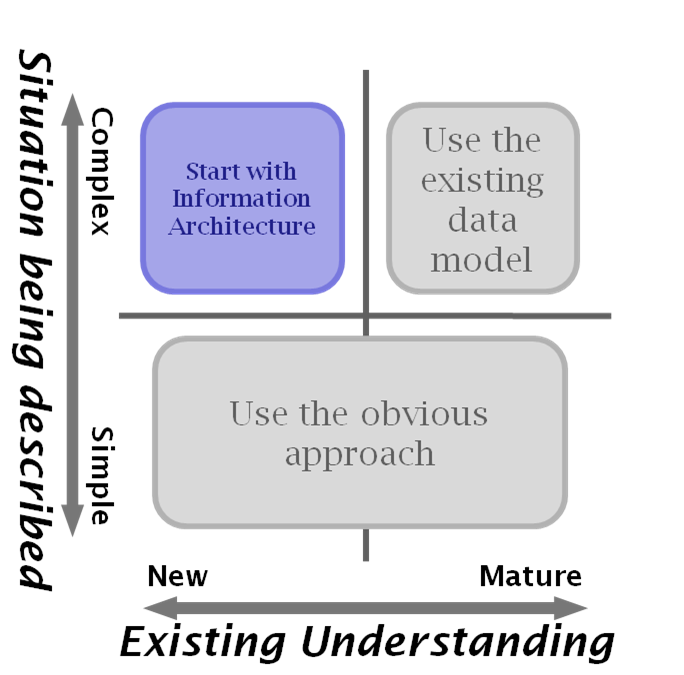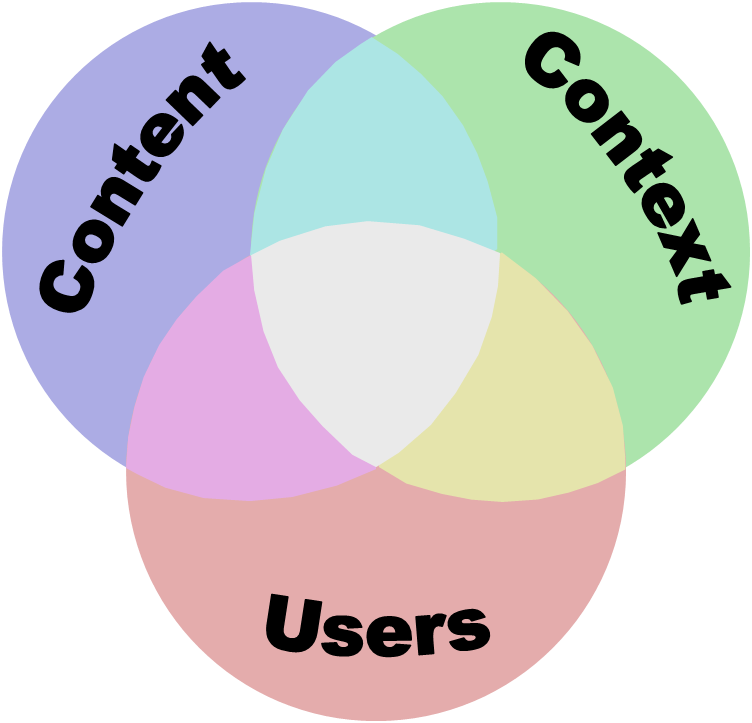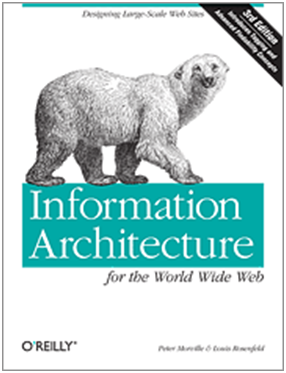 |
| Music |
| Computing |
| Info Arch |
| Theory |
| Practice |
| Glossary |
| Index |
Information Architecture |
|

There is no single agreed definition of what the term Information Architecture means, and given the wide range of user goals, the fact that information is held mostly in written texts rather than structured databases and the newness of the field this is not too surprising.
My working description is:
Information architecture (IA) is the art of expressing a model of the key concepts used within a domain. Usually the goal is to tailor some kind of delivered system to meet the needs of the users.
Here are some other good definitions (from "Information Architecture" by Peter Morville & Louis Rosenfeld):
- The structural design of shared information environments
- The art and science of shaping information products to support usability and findability
Often IA is thought of as being a set of techniques to organise web contents, however the field is wider than that and can be applied to a number of situations, for example library systems, content management systems, web site development, user interactions, database development, programming, technical writing, enterprise architecture and critical system software design. The details of Information Architecture are somewhat different in these different branches but all these definitions share a common set of concerns and approaches.

Every system has an Information Architecture, but very few have an Information Architect. For simple systems the information's structure is so easy to understand that there is little need to document it. For some topics the potential users already have an agreed formally defined data model, in those cases it is important to follow the established shape, so there is no need to create a new one. However in the majority of cases the situation is both too complex to be trivial and too innovative to be prescribed. These are the cases that can most benefit from including an information architect.
The main tasks of such a person are to:
- Interact with stakeholders to clarify the key features
- Create a simplified model that is able to encapsulate the most important concepts
- Populate that model with enough detail to be valuable to users
- Use a variety of renditions to document the model in order for the contents to be debated and agreed
- Deliver the key elements of that description to the developers so they can incorporate it into the system behaviour and information content of a resulting system
This site contains an Information Architecture Body of Knowledge listing a number of concepts that I believe are important to the field.

The maximum value of information comes from combining the three main elements of the Information Triad shown above.
External Resources

The best introduction to the subject is the classic Information Architecture for the World Wide Web which is now in its third edition. While it focuses on the application of Information Architecture to the practice of building web sites it also does a really good job of the fundamentals.
Links to this page
The following pages link to here: Best Practice, Building Web Sites, Chaos Theory, Classification, Complexity, Computer Science, Conceptual Schema, Data Form, Data Model, Data Repository, Discipline, Domain, Gathering Data, IA Best Practice, IA Rendition, Implementing IA, Index, Information Architect, Information Architecture Body of Knowledge, Information Theory, Linguistics, Metaphor, Model, Online analytical processing, Owner, Philosophy, Practice, Practitioner, Software Development, Stakeholder, Theory, TsorT Info, Unified Modeling Language, User, User Honeycomb, User Interface, Uses for IA